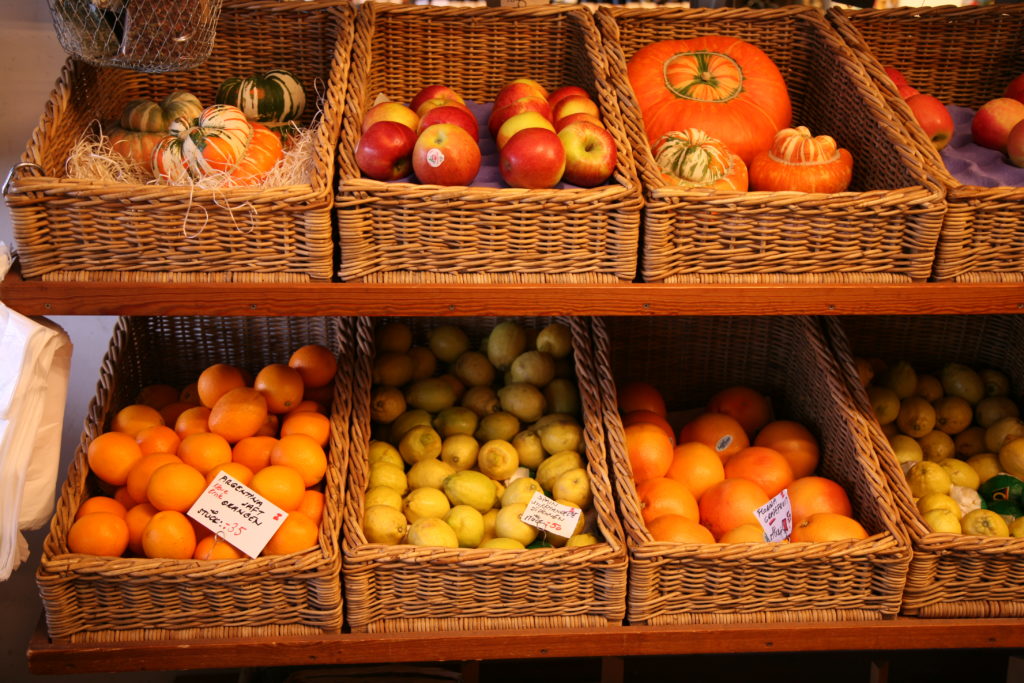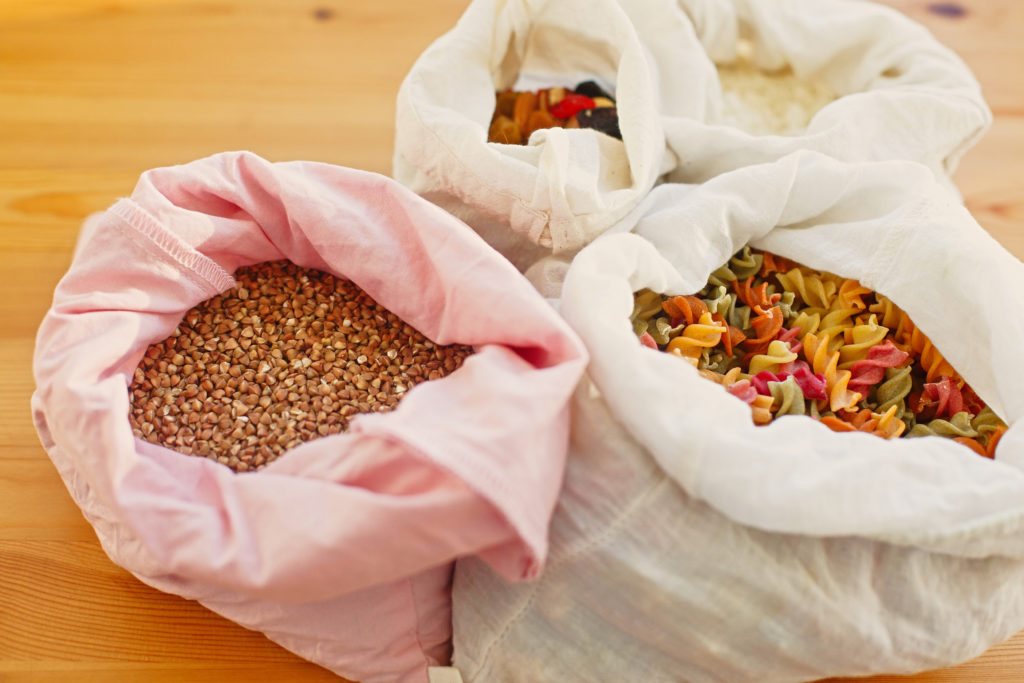
Academics and graduate students sometimes struggle to write up the results and discussion sections of their articles and dissertations. When they receive feedback like “too descriptive”, “need to synthesize”, or “where are your conclusions?”, they wonder what they can do to improve their writing.
During a recent discussion on how to guide our students in writing up their results and discussion, a colleague shared with me a metaphor that she uses: going to the grocery store. She explained how she used it and I have expanded it here to demonstrate how to think of the results and discussion sections of articles and chapters in a dissertation.
When you go to the grocery store, you enter the produce section (research context) and see tables of all kinds of produce imaginable (raw data). You decide what you want based on particular criteria (your research questions) and fill your basket. When you get home, you empty your shopping bags and the phone rings with a call from your curious friend. She asks,“what did you buy?”. You could answer with a list (unsynthesized data): apples, eggplant, bananas, celery, bean sprouts, and a watermelon. However, if you do that, she might say “what an odd assortment! You must not like round foods, because most of what you bought is not round”. Based on what you told her, she has drawn a conclusion.
However, it is unlikely that you went to the store buying foods based on their shape. By providing her unsynthesized data without drawing conclusions, you have left her to draw her own, in the same way that writing up results by only presenting the raw data, you leave the reader to draw his own conclusion.
Perhaps instead, you answer “I bought three kinds of fruit and three kinds of vegetables”. Here you have synthesized your data by grouping the food according to type. What type of conclusion do you want her to draw from this? You add “I wanted a variety of both fruits and vegetables”. Your friend is now much less likely to criticize what you bought because she has been presented with synthesized data and a conclusion and can better follow your rationale. She goes on to ask you about the rest of what you bought, and you present your shopping her in a similar way: “I also bought flour, sugar, and milk. Now I have all the ingredients needed to do some baking” and “I bought lentils, quinoa and rice. Now I have different grains in my pantry”. The results of your shopping trip as presented to your friend on the phone parallel the presentation of your results in your article or dissertation. This may seem obvious, but it is very common for novice writers (I still do it sometimes) to present the synthesis, but forget to draw a conclusion, because to them, it is obvious, although not always to your readers.
Now on to the Discussion: Your curious friend is momentarily satisfied as she hears your results, but then she asks “why?” She may be wondering if you plan to do try some new recipes, cook or bake some old favorites, or go on a raw food diet. The Discussion section of your article or dissertation is where you satisfy the ‘why’ of the reader. You might answer your friend “I chose these items to buy because I am expecting a lot of company and the guests have different food preferences, so I want to cook a variety of foods from scratch”. Now she has an overall idea of what your rationale was.

Now you have her interest as you break down the results with reference to previous supporting literature. “I can cook using the lentils and quinoa. Lentils are naturally gluten-free (Smith, 2020) and a favorite among vegetarians because they are quick to cook (Jones, 2019). Quinoa is considered a highly nutritious ancient grain (Thoms, 2018) and cooks up easily in the pressure cooker, so I want to try that as well. With lentils and quinoa, I have the two quickest cooking grains for those who are vegetarian or gluten intolerant”. With these four sentences you have 1) recapped your results briefly 2) tied your results to the previous literature (which should appear in your lit review) 3) drawn a conclusion demonstrating critical thinking, rather than just description. Ok, you may not do that in real life, but in academic writing, that is exactly what we are called to do.
This last element, demonstrating critical thinking, is crucial to your Discussion conclusions. You need to identify significance, timing, or suitability; structure evidence in order of importance; evaluate significance or strengths and weaknesses; or argue a case. To help my students with the distinction between descriptive and critical writing, I refer them to a useful chart found on p. 12 in the book listed below (Cottrell, 2012). Recently one of my students shared a video that also addresses this aspect of writing. Once you have a sense of what the difference is between critical and descriptive writing, you may find it helpful to create your own chart to post near your writing area as a regular reminder.
The Results and Discussion writing are the parts of our academic writing where we get to share not only what we found in our research, but what it means for answering our research question. That is why I often structure my Discussion by revisiting the research question. By keeping it at the forefront, it reminds me, as well as the readers, what I was hoping to learn from the study, while I situate it in the larger field in which I am writing.
Having a clear concept of the Results and Discussion will strengthen your writing, in the same way that shopping with particular criteria in mind, while not obligatory, will make your grocery shopping more purposeful (but less likely to result in your bring home potato chips 😊). Carrying a metaphor this far may be an overextension. I welcome you to test it out and let me know in the comments if you feel it works!
(Please note that Smith, 2020; Jones, 2019; and Thoms, 2018 are invented citations for the purpose of illustration). If you wish to share this post as a pdf, please cite it as:
Dressler, R.. (2020). Going to the grocery store: A metaphor for writing up results and discussion. University of Calgary. http://hdl.handle.net/1880/112375
Cottrell, S. (2012). The study skills handbook. Palgrave Macmillan.
